“The pandemic has sparked an interest in self-sufficiency”
Urban agriculture as a lot of different benefits, but with COVID-19 pandemic some people start planting to help with the budget. On grocery stores, vegetables and fruits prices, among others products, keep going up and the Torontonians are growing all over the city. If you want to apply as a grower or as a landholder, there are a few options in you neighbourhood: Beaches-East York; Etobicoke-Lakeshore; Davenport; Toronto Danforth; Humber River-Black Creek; Toronto-St. Pauls; Scarborough-Rouge Park; York South-Weston; University-Rosedale; Parkdale-High Park.
Rhonda Teitel-Payne coordinated and managed urban agriculture and other community food programs at The Stop Community Food Centre for 14 years. Rhonda also contributed to city-wide food security initiatives as a member of the Toronto Food Policy Council, Toronto Community Garden Network, World Crops project, Parks and Recreation Community Garden Advisory Committee, Plant a Row Grow a Row and GrowTO. She is the Co-ordinator of Toronto Urban Growers, the institution that organized in 2017 the first official Urban Agriculture Day in Toronto.
Milénio Stadium: It’s hard to have a piece of land in a city like Toronto. However, urban agriculture has health, social, economic, and ecological benefits.
Toronto Urban Growers: It’s no surprise that people who grow their own food tend to eat more vegetables and thus get the physical health benefits of a more nutritious diet. Most gardeners will also tell you that their mental well-being gets a boost from getting outside in nature, particularly for people who live in apartments with no outdoor space. After months of COVID isolation, many people can identify with that!
When people grow food in visible, public places like balconies and parks, even the non-growers get to experience the stress-relieving power of seeing small elements of nature in our crowded city. The more urban spaces are covered with greenery, the cleaner and cooler our air becomes. With fewer hard surfaces concentrating storm water run off, the more rainwater can be absorbed slowly into our river and lake systems, reducing flooding. Here’s a Toronto factoid: we were the first city in North America to establish a green roof bylaw to encourage turning grey roofs to green spaces.
As for eating the produce, the people who really do have green thumbs are usually more than happy to share the overabundance of produce with neighbours, family and community food programs. Talking about the produce they’re sharing can be a chance to tell meaningful, personal stories about their families or cultural traditions. It’s not a bad way to make friends with your neighbours!
MS: Where are the urban growers located in Toronto and who can apply?
TUG: People are growing all over the city in private yards or balconies, in city parks and schools or in common areas at faith organizations or apartment towers. Each garden is organized differently. Some are only open to residents of a building, others are open to the public and anyone can become a member. There is such a great demand for garden space, many gardens have wait lists. This is particularly true in high-density areas with few green spaces.
MS: What is the definition of urban agriculture and what are the five top products?
TUG: A very simple definition is growing food by cultivating plants and raising animals in and around cities. Many fruits and vegetables from around the world can be grown here in Toronto. It’s fun to ask people what they are growing, you’ll discover a dozen names for the same vegetable because the people who grow it speak many different languages. More people are becoming interested in keeping bees or even chickens!
MS: The demand for urban agriculture has increased since the beginning of pandemic?
TUG: Yes! Seed and seedling vendors are struggling to keep up with the demand. New projects have been started to encourage people to grow food in their front yards and balconies because there aren’t enough community garden spaces available. The pandemic has sparked an interest in self-sufficiency, both for families and whole communities. People realize the importance of growing produce close to home so that we are less dependent on food that is shipped in.
MS: TUG is offering free workshops for organizers in community and allotment gardens on public and private lands. What is the purpose of this workshop?
TUG: We wanted to be sure that people could grow food this season without increasing the risk of spreading the COVID virus. The workshops help people to think through how to apply the City of Toronto’s safety guidelines in the specific context of their own gardens. How do you make sure that all gardeners know about the safety practices? How do you keep people two metres apart? How do you provide handwashing facilities and sterilize equipment? If people can’t work in the garden this year because they are at higher risk for becoming sick, how do we keep them involved in other ways?
MS: Toronto has a huge potential for urban agriculture. In 2016, the city has become Canada’s first Bee City.
TUG: Yes, and Live Green Toronto now has pollinator programs to show people how they can help bees and other insects that help us grow food. There are many different spaces where we can grow food and many different ways to do it – individual gardens, businesses and community projects. There are also so many people in Toronto who know how to grow food, whether they are people who were farmers before they immigrated to Toronto or Indigenous people who have been growing food here for thousands of years. I dream that some day I will walk through the city and see food growing everywhere I look – balconies, rooftops and tucked away in small spaces. We just need more people to pick up trowels and start experimenting.
Joana Leal/MS

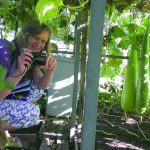
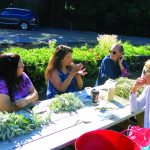
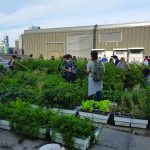
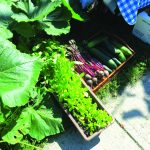

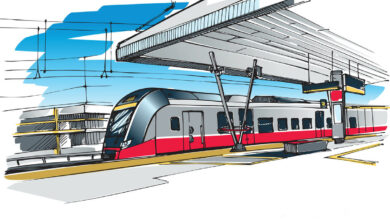




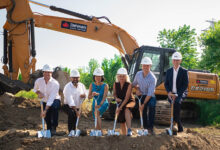
Redes Sociais - Comentários